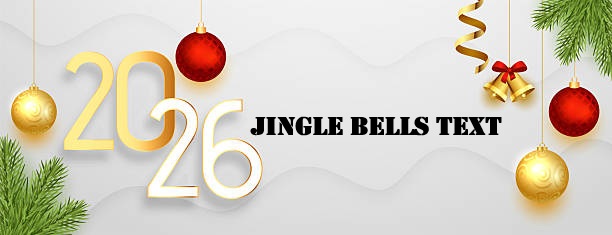Introduction to the Jingle Bells Text
The jingle bells text is one of the most iconic and joyful holiday songs ever written. For centuries, it has brought people together, spreading cheer and unity during the festive season. But have you ever wondered where the jingle bells text originated or what makes it so timeless? This article takes you on a fascinating journey through its history, lyrics, cultural impact, and hidden meaning.
The jingle bells text continues to charm generations with its simple yet catchy rhythm and message of celebration. Understanding its story adds a new layer of appreciation for this beloved carol.
The Origins of the Jingle Bells Text
A Song Born for Thanksgiving, Not Christmas
Interestingly, the jingle bells text was not originally written for Christmas. It was first composed in the mid-nineteenth century by James Lord Pierpont. The song, titled One Horse Open Sleigh, was actually meant for Thanksgiving celebrations in America. Over time, however, it became synonymous with Christmas festivities.
Read More: Serrano Schinken
The joyful tune, combined with the rhythm of sleigh bells, captured the excitement of wintertime travel and fun. Eventually, the jingle bells text became a universal symbol of joy during the holiday season.
Understanding the Meaning Behind the Jingle Bells Text

A Celebration of Fun and Freedom
At first glance, the jingle bells text seems like a simple holiday jingle. But beyond the catchy melody lies a theme of freedom, speed, and adventure. Riding through the snow in an open sleigh represents the thrill of living in the moment.
The lyrics celebrate companionship, laughter, and the beauty of nature. The sound of the bells creates a feeling of excitement and warmth, reminding listeners of the joy that comes with togetherness and festive cheer.
How the Jingle Bells Text Became a Global Classic
From Local Tune to Worldwide Tradition
The jingle bells text gained massive popularity when choirs began performing it at Christmas events. Its cheerful melody and easy lyrics made it a favorite for people of all ages. By the twentieth century, it had spread across continents, becoming a staple in movies, commercials, and concerts.
Today, no holiday playlist feels complete without the jingle bells text. It is sung in schools, churches, and family gatherings across the globe, transcending language and culture.
Cultural Influence of the Jingle Bells Text
A Song That Unites Generations
One reason the jingle bells text remains timeless is its universal message. It celebrates joy, laughter, and connection — emotions that every culture understands. Whether sung by children in schools or performed by professional choirs, it unites generations.
Over time, many artists have reimagined the jingle bells text in various musical styles — from pop to jazz to rock. Each version brings a fresh touch while preserving its original festive spirit.
The Structure and Poetry of the Jingle Bells Text

Simple Words, Lasting Impact
The jingle bells text stands out because of its simplicity. Its repetitive pattern, lively rhythm, and rhyming scheme make it easy to remember. The opening line, “Dashing through the snow,” instantly sets a playful tone.
Every verse builds on a sense of movement and happiness. The repetition of “Jingle all the way” amplifies excitement, making it one of the most memorable lines in musical history. This clever structure has contributed greatly to the song’s long-lasting popularity.
Modern Adaptations of the Jingle Bells Text
From Classic Carols to Digital Trends
In the digital era, the jingle bells text continues to evolve. It appears in memes, videos, and festive animations shared on social media platforms. Educational apps and streaming services include interactive versions for children.
New remixes of the jingle bells text emerge every year, keeping the melody alive for modern audiences. This continuous reinvention proves the song’s enduring charm and adaptability.
The Hidden Symbolism of the Jingle Bells Text
Bells as Symbols of Celebration
Bells have long been associated with celebrations and spiritual awakening. In the jingle bells text, they symbolize happiness and the arrival of good times. The ringing sound reminds people to rejoice and embrace positivity.
The sleigh ride, meanwhile, symbolizes unity and shared experiences. Together, these elements transform the jingle bells text from a simple tune into a meaningful anthem of joy and connection.
Why the Jingle Bells Text Remains Relevant Today

Even in modern times, the jingle bells text continues to evoke nostalgia and happiness. It connects people through shared memories and traditions. Whether played on the radio or sung at community gatherings, it brings warmth to the cold winter season.
Its cheerful message transcends religious and cultural boundaries, reminding everyone that joy and kindness are universal.
Conclusion: The Timeless Charm of the Jingle Bells Text
The jingle bells text is much more than a holiday song. It is a piece of cultural history, a symbol of unity, and a celebration of joy that has stood the test of time. Its origins may be humble, but its impact is extraordinary.
From a Thanksgiving song to a Christmas anthem, the jingle bells text has traveled through generations, spreading laughter and light across the world. Its simple lyrics remind us of the importance of togetherness, fun, and gratitude.
Even today, when technology and modern lifestyles dominate our celebrations, the jingle bells text continues to resonate. It invites us to pause, smile, and embrace the beauty of the moment — much like a sleigh ride through the snow.
As we sing it each year, we’re not just repeating a melody; we’re keeping alive a tradition that symbolizes happiness and unity. The sound of jingling bells carries a powerful reminder: joy is timeless, and music connects us all.
In essence, the jingle bells text remains a shining example of how art can unite people across ages, cultures, and continents. Its cheerful rhythm continues to echo through time, reminding us that no matter how the world changes, the spirit of joy will always find its way home.
FAQs About the Jingle Bells Text
1. Who originally wrote the jingle bells text?
James Lord Pierpont wrote the jingle bells text in the nineteenth century for a Thanksgiving celebration.
2. Why is the jingle bells text associated with Christmas?
Its snowy imagery and joyful melody made it perfect for Christmas celebrations, eventually becoming a seasonal favorite.
3. What does the jingle bells text symbolize?
It symbolizes joy, togetherness, and the excitement of celebrating wintertime adventures with loved ones.
4. How has the jingle bells text changed over time?
Modern versions include remixes, translations, and digital adaptations that keep the classic spirit alive for new generations.
5. Why does the jingle bells text remain popular today?
Its simplicity, catchy rhythm, and message of joy make it universally loved across cultures and age groups.



